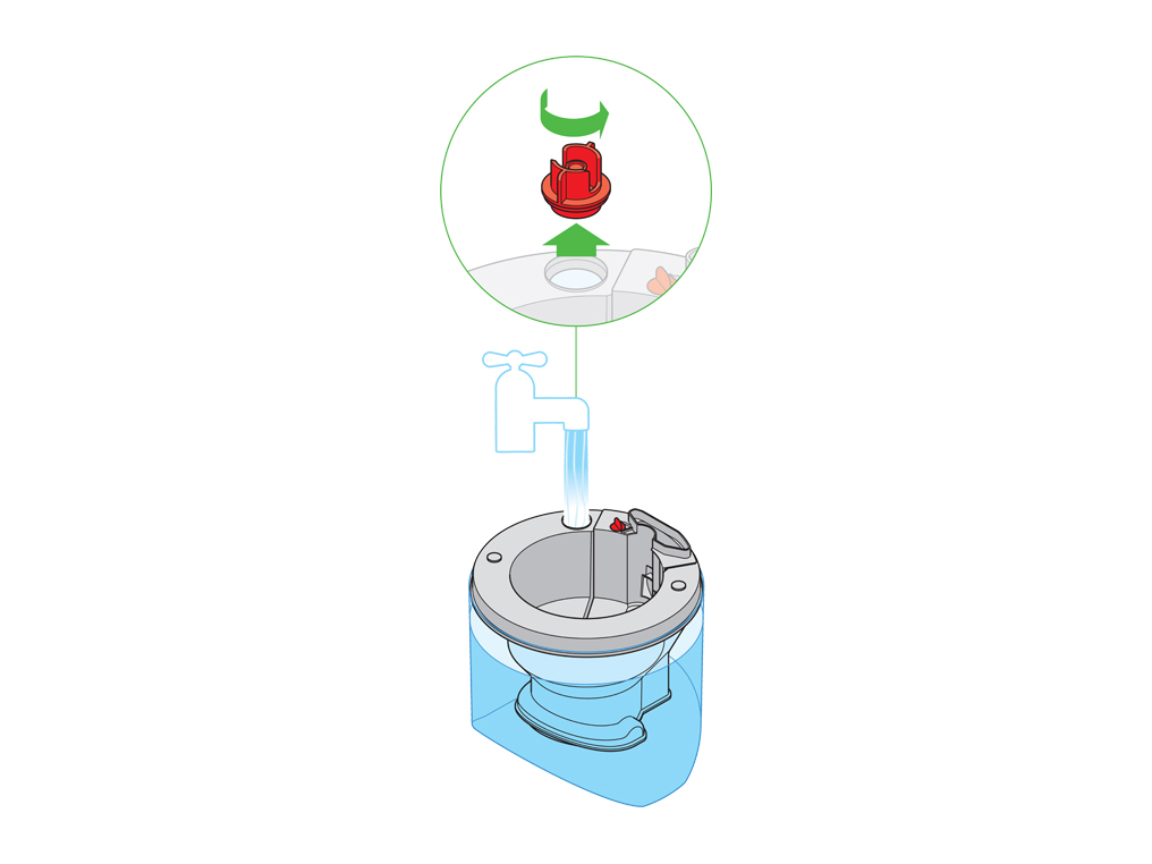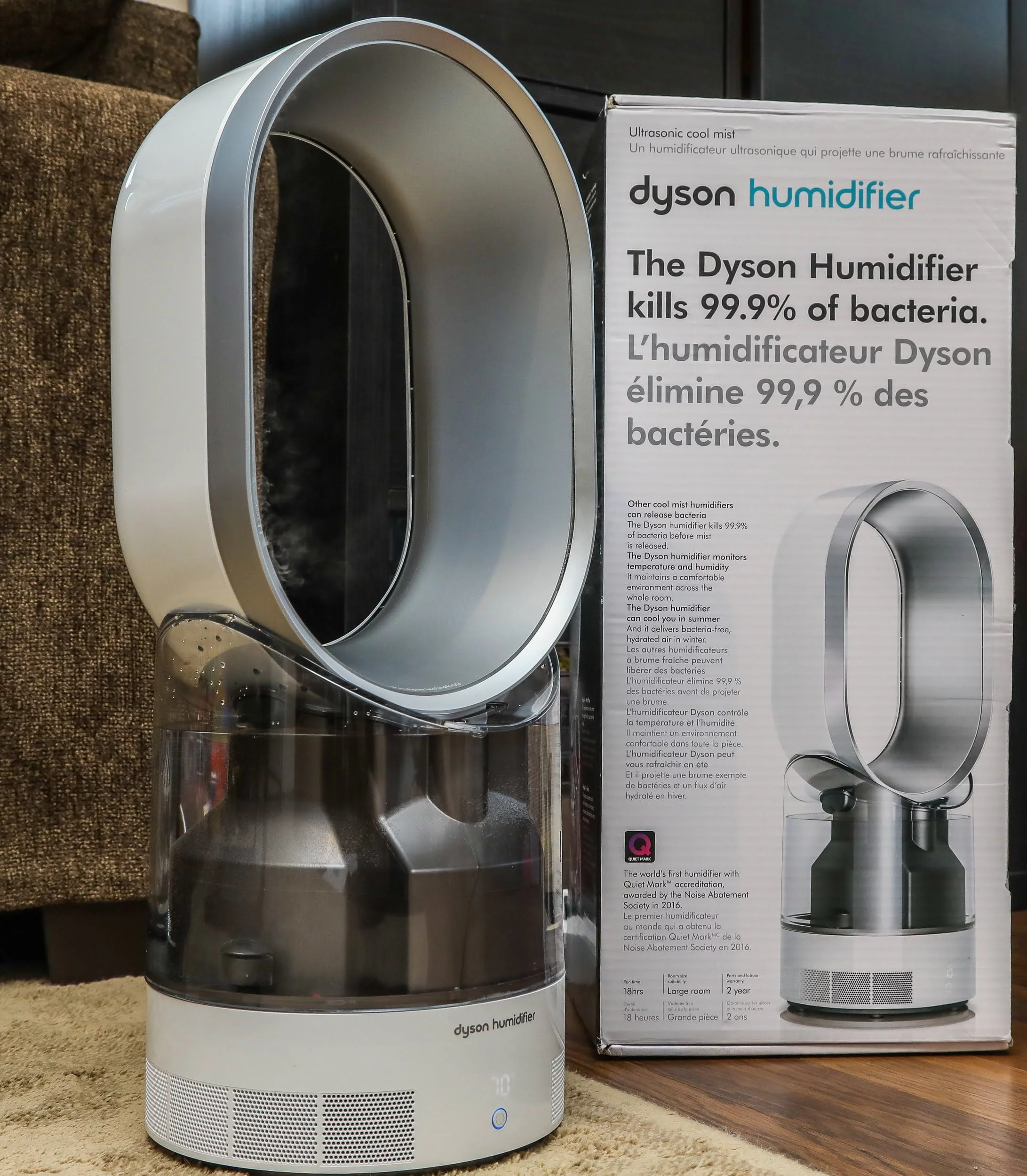Have you ever noticed your Dyson humidifier acting up, not using water as it should? You’re not alone.
This puzzling issue can leave you scratching your head, wondering why your high-tech gadget isn’t performing as expected. You invested in this device to improve your air quality and enhance your comfort, but now it seems to be falling short.
Imagine the relief of knowing exactly what’s going wrong and how to fix it, allowing you to reclaim the fresh, hydrated air you deserve. We’ll unveil the mystery behind your Dyson humidifier’s water usage problem. We’ll guide you through simple troubleshooting steps, so you can easily identify and resolve the issue. By the end, you’ll feel empowered with practical solutions and ready to enjoy the benefits of your humidifier once again. Let’s dive into the reasons and remedies that will bring your device back to life, ensuring it serves you as brilliantly as it was designed to.

Credit: www.ebay.com
Common Issues With Dyson Humidifiers
Dyson humidifiers are known for their efficiency and sleek design. They offer relief during dry seasons and improve indoor air quality. Yet, like any appliance, they can face issues. Sometimes, users find that their Dyson humidifier is not using water. This problem can be frustrating and perplexing. Understanding the common issues can help in troubleshooting.
Power Supply Problems
Power supply issues are a frequent cause of malfunction. Check if the humidifier is plugged in properly. Inspect the power cord for any damage. A faulty outlet can also disrupt the power flow. Ensure the socket is working by testing with another device. Without a stable power supply, the humidifier won’t operate.
Sensor Malfunctions
Sensors play a crucial role in humidifier function. They detect humidity levels and regulate water usage. When sensors malfunction, the humidifier may not use water. Dust or debris can obstruct sensor operation. Regular cleaning can prevent sensor issues. If cleaning doesn’t help, sensor replacement might be necessary.
Blocked Water Pathways
Water pathways need to be clear for proper functioning. Blockages can prevent water from reaching the main chamber. Mineral build-up or debris are common culprits. Regular maintenance can keep pathways clear. Use distilled water to minimize mineral deposits. Check for clogs and clean the pathways as needed.
Checking Water Levels
You’ve invested in a Dyson humidifier to ensure your home remains comfortable, especially during dry seasons. But what happens when it seems to be ignoring the very essence of its purpose—water? Checking water levels is a crucial step in troubleshooting your humidifier issues. Let’s dive into some practical aspects of this process.
Correct Water Tank Placement
Ever tried placing your Dyson humidifier tank only to have it sit awkwardly or not engage properly? A misaligned tank might be the root cause of your humidifier’s reluctance to use water. Ensure the tank is securely seated and positioned correctly. The base should connect with the tank perfectly—no gaps or tilts.
Taking a moment to double-check the alignment could be the simple fix you need. Have you ever been in a rush and placed it haphazardly, only to find it wasn’t working? Such minor oversights could be the culprit.
Water Tank Seal Inspection
Just like you wouldn’t want a leaky bottle, your humidifier doesn’t want a leaky tank. The seal is crucial for maintaining proper water flow. Examine the seal for any signs of wear and tear. A compromised seal can prevent water from moving into the humidifier’s system.
If the seal appears damaged, consider replacing it. Sometimes, a quick wipe down to remove any debris or residue can also do wonders. Have you noticed droplets or water spots around your humidifier? That might be a hint that the seal isn’t functioning as it should.
Ensuring your Dyson humidifier uses water efficiently is about understanding its components and knowing where to look. How often do you check these elements? A little regular maintenance can save you from bigger headaches down the road.
Cleaning And Maintenance
Dyson humidifiers might not use water due to clogged nozzles or low water levels. Regular cleaning helps maintain performance. Check and refill the water tank to ensure proper function.
Maintaining your Dyson humidifier can seem like a chore, but it’s essential to keep it functioning properly. Regular cleaning ensures that your humidifier uses water efficiently and maintains a healthy environment in your home. Let’s dive into some straightforward maintenance steps that will keep your Dyson humidifier in top shape.Descaling The Humidifier
Mineral buildup can block the humidifier’s ability to use water effectively. To descale, mix equal parts of white vinegar and water. Pour this solution into the water tank and let it sit for about 15 minutes. Rinse thoroughly to ensure no vinegar residue remains. Repeat this process once a month to prevent mineral buildup. This will help your humidifier use water efficiently and maintain optimal humidity levels in your home.Cleaning The Fan And Filters
Dust and dirt can accumulate on the fan and filters, hindering water usage. To clean the fan, use a soft, damp cloth to wipe away any dust. Be gentle to avoid damaging the fan blades. Filters should be rinsed under cool water. Allow them to dry completely before reinserting. Regular cleaning of the fan and filters can significantly improve the humidifier’s performance. Do you remember the last time you cleaned your humidifier’s filters? Regular maintenance can prevent your humidifier from becoming an ineffective water waster. Embrace these simple cleaning steps, and you’ll notice a difference in your Dyson humidifier’s performance.
Credit: support.dyson.com.au
Technical Troubleshooting
A Dyson humidifier may not use water due to a clogged filter or incorrect settings. Check the water tank for proper placement. Regular maintenance and cleaning can prevent these issues.
Technical issues can be frustrating, especially when your Dyson humidifier is not using water as expected. Don’t worry; many of these problems can be fixed with some technical troubleshooting. By exploring a few simple solutions, you might just breathe new life into your humidifier.Resetting The Humidifier
Resetting your Dyson humidifier can often solve issues with water usage. Unplug the device and leave it off for a few minutes before plugging it back in. This simple reset can sometimes clear any glitches in the system. Check the water tank to ensure it is seated correctly. An improper connection might prevent the unit from drawing water. Make sure all components are aligned as instructed in the user manual. Are the filters clean? Clogged or dirty filters can impede water flow. Regularly clean or replace them to maintain optimal performance.Firmware Updates
Keeping the humidifier’s firmware up to date is crucial. Dyson often releases updates to fix bugs and enhance functionality. Check their website or user portal for the latest firmware version. Updating the firmware can be as simple as connecting your humidifier to a Wi-Fi network. Follow the instructions provided by Dyson to ensure you’re on the latest version. Consider setting reminders for regular firmware checks. This proactive approach can prevent issues before they arise. If technical solutions seem daunting, remember you’re not alone. Online forums and Dyson’s customer support can offer additional guidance. Don’t hesitate to seek help if needed. Have you tried these steps and seen improvements? Or do you have other tips to share? Engaging with others can provide fresh perspectives and solutions.When To Seek Professional Help
Experiencing issues with your Dyson humidifier not using water might indicate a technical problem. Persistent malfunction calls for professional help, ensuring optimal performance and safety. Consult an expert if troubleshooting steps don’t resolve the issue.
When your Dyson humidifier isn’t using water, frustration can set in. You might attempt to fix it, but some issues demand expert attention. Knowing when to call in a professional can save you time and effort. If you notice persistent problems, it’s time to evaluate your next steps.Identifying Persistent Issues
A humidifier should work smoothly. If it consistently fails to use water, something’s wrong. First, check for blockages in the water tank or filters. Sometimes, cleaning these parts resolves minor issues. If the humidifier still doesn’t function, there might be an underlying problem. Persistent issues signal that professional help is necessary. Experts can diagnose complex problems beyond basic troubleshooting.Contacting Dyson Support
Dyson offers dedicated customer support. They can provide valuable assistance. If your humidifier continues to malfunction, reaching out to Dyson is wise. Their team can guide you through potential solutions. They might offer troubleshooting tips or recommend service options. Contacting Dyson ensures you receive expert advice tailored to your product.
Credit: www.thegate.ca
Frequently Asked Questions
Why Is My Dyson Humidifier Not Using Water?
Check the water tank and make sure it’s correctly positioned. Ensure no blockages or leaks.
How Do I Fix My Dyson Humidifier?
Ensure the humidifier is properly assembled. Clean any clogs and check for software updates.
Can A Clogged Filter Stop Water Usage?
Yes, a clogged filter can prevent water from circulating. Clean or replace the filter regularly.
Is Low Humidity Affecting Dyson Humidifier Performance?
Yes, low humidity levels might reduce water usage. Increase the humidity in your room.
Could Power Issues Cause Dyson Humidifier Problems?
Yes, power interruptions can affect performance. Make sure your device is plugged in and powered correctly.
Conclusion
Understanding why your Dyson humidifier isn’t using water can be frustrating. But simple steps can help. Check for blockages and ensure proper settings. Regular cleaning is crucial for efficient operation. Proper maintenance ensures your humidifier works smoothly. Always use clean, distilled water.
This prevents mineral build-up. If problems persist, consult the manual. Or contact Dyson support for help. Regular care extends the lifespan of your device. Your air will stay fresh and humidified. Simple actions make a big difference. Keep your humidifier in top condition.
Enjoy a comfortable and healthy home environment.
